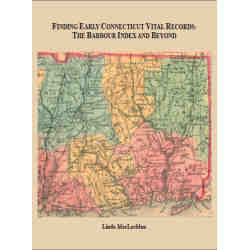
(The following article originally appeared in the [Washington] Examiner.com on July 4, 2010.)
Family Bibles hold a unique position among genealogical record groups. They are not official records created for use outside of the family. This point cannot be understated, or underemphasized, for often certain facts will appear in a family Bible that do not otherwise appear. Family Bibles are created by the family and for the family.
[av_image src=’https://genealogical.com/wp-content/uploads/2018/07/image1-1-300×109.jpg’ attachment=’5193′ attachment_size=’medium’ align=’right’ styling=” hover=” link=” target=” caption=” font_size=” appearance=” overlay_opacity=’0.4′ overlay_color=’#000000′ overlay_text_color=’#ffffff’ animation=’no-animation’ admin_preview_bg=” av_uid=’av-4jsvyg’][/av_image]
Though family Bibles rank as one of the most useful genealogical resources, their use in African-American family history can often be overlooked and misunderstood. Specifically, the family Bibles of slave-owning families should be sought whenever possible. Consider the following case.
In the Slave Statistics of Prince George’s County, Maryland, Mary Parker, a female slave of forty years is listed with several children among the slaves owned by one Samuel Peach of the 7th Election District. Also listed among Mr. Peach’s holdings were two older slaves named Anthony and Airy Duvall, with several other families bearing the surnames Haywood, Clifton, Davis, and Harrison.
Mary Parker appeared with her husband John Parker and their children in the 1870 and 1880 federal census enumerations in Anne Arundel County, Maryland. Mary did not appear in the 1900 census, though, because she had apparently already died, and, since the state of Maryland did not begin recording deaths officially until 1898, it seemed likely that her death would not be recorded. A search of the county death index confirmed this suspicion.
The death certificates of two of her children were located, however: Oden Parker, who died in Prince George’s County, Maryland, and Isabella Carroll, who died in Washington, D. C. Both of these death certificates identified their mother by her maiden name, “Mary Duvall.”
Were Anthony and Airy Duvall, the elderly slaves of Samuel Peach, Mary Parker’s parents?
Neither Samuel Peach nor his father William Elson Peach died prior to the abolition of slavery in Maryland in 1864, so no estate inventories could provide additional evidence to this fact. Only one bill of sale, a mortgage between William Elson Peach and his son Samuel, was recorded—in 1823, the year before Mary Parker was likely born. The instrument names Anthony and Ary and several other adult slaves that do not appear in the 1867 Slave Statistics, but only one young child, a boy named Dennis. Anthony and Ary are the only two slaves that appear in both records.
William Elson Peach appears in the county personal property tax assessment records up through 1832, replaced in the records by son Samuel Peach thereafter. But the assessment records do not provide names for the Peach slaves, and the personal property assessment for 1824—when Mary was born—no longer exists. Between 1823 and 1825, the constitution of the Peach slave holdings changed dramatically, enough so that William Elson Peach could not have been reporting the ages and quantity of his slaves accurately up to that point. The discrepancies coming to light—again in the year Mary was born—add further confusion.
At this point it would seem unlikely that any evidence would ever prove conclusively whether Mary (Duvall) Parker was the daughter of Anthony and Airy Duvall.
In 1988, John Harding Peach, a genealogist studying the Peach family, published The Peach Tree Handbook, Volume II: Southern Maryland Branch. The book contained a wealth of information on the white Peach family, including portraits of both William Elson and Samuel Peach. But more importantly, Peach published several pages from a family Bible originally owned by Samuel Peach, in which the births of his slaves had been recorded.
[av_image src=’https://genealogical.com/wp-content/uploads/2018/07/image2-1-300×244.jpg’ attachment=’5196′ attachment_size=’medium’ align=’right’ styling=” hover=” link=” target=” caption=” font_size=” appearance=” overlay_opacity=’0.4′ overlay_color=’#000000′ overlay_text_color=’#ffffff’ animation=’no-animation’ admin_preview_bg=” av_uid=’av-2hqs0o’][/av_image]
This list of slave births begins thus:
Births of Cold. People
Anthony Born the year 1797
Ary ” Sept. 1798
Anthony & Ary’s Children
Henry Sept 1818
Dennis Feb 1821
Mary March 1823
Charity Mch. 1827
Truman June 1829[1]
Here we see that Mary was indeed one of the children of Anthony and Airy or Ary Duvall, and we further have the month and year of her birth! No official record would have provided this information about an enslaved woman, yet this family Bible records for posterity the lives and families of these men and women.
This is just one example of a slave owner’s Bible, in which the births of slaves appear. Many others still survive in the homes of the descendants of slaveowners. A few have been transcribed in published books, such as that of the Peach genealogy, or on websites such as the USGenWeb and Genealogy Trails sites. Quite a few family Bibles also lie in the manuscript collections of various universities, historical societies, and organizations such as the Daughters of the American Library. You can even find some online, such as those compiled in the North Carolina Family Records Online collection created by the North Carolina State Archives.



